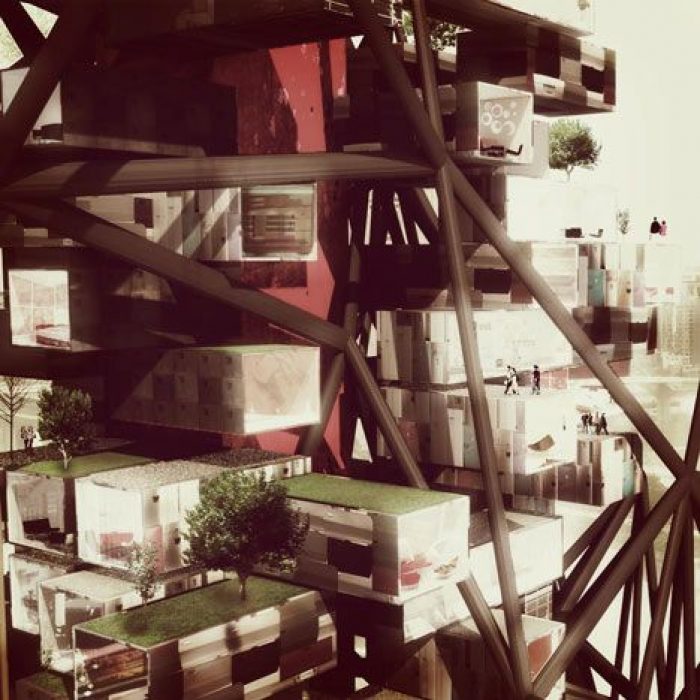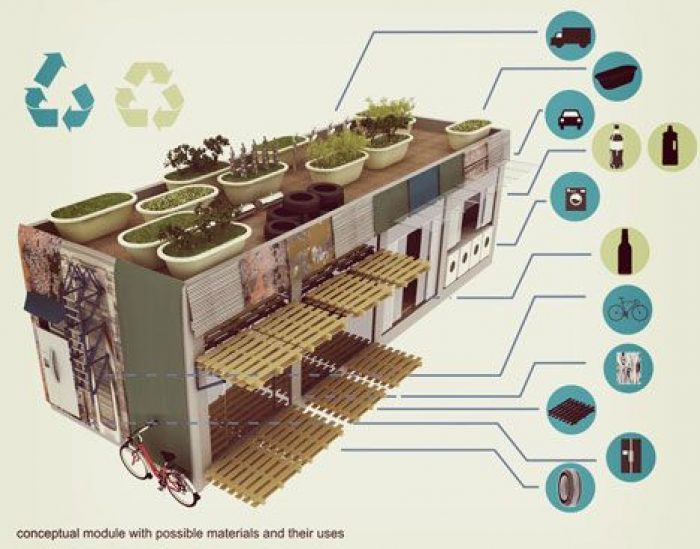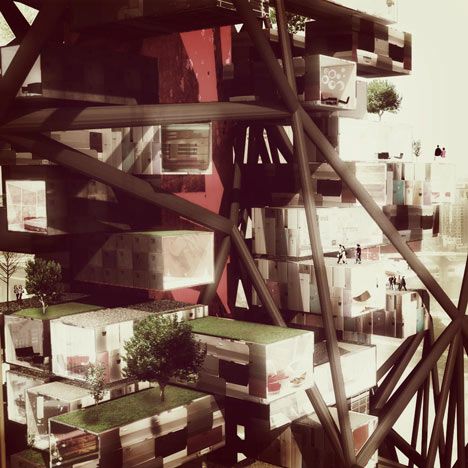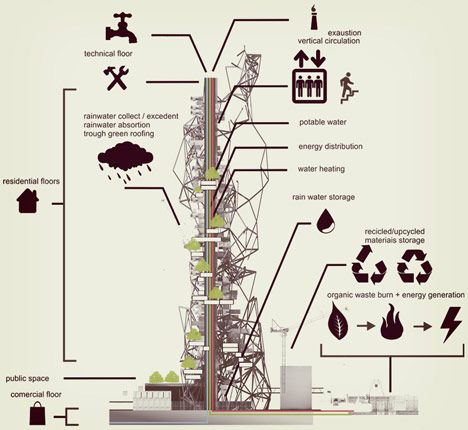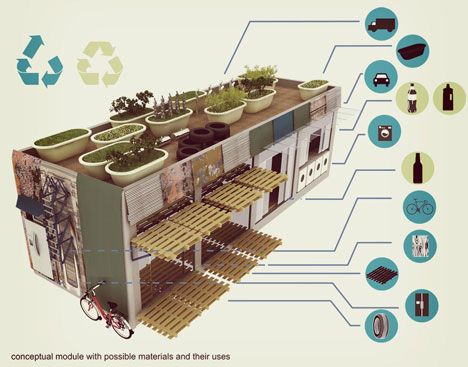The main idea is about being a cultural landmark in changing the mindset of people, where the future is the use of garbage, the view that the waste we generate has value both as an agent of social change and as a physical element of construction. Nowadays people usually do not bother with the garbage they generate, see it as a problem of others. Changing this thinking is crucial to change the course of evolution of the planet to a sustainable path.
The building works on the issues of a specific city, in this case São Paulo, beginning a transition point that tries to achieve a better life quality for the population by the use of the trash that its inhabitants generate.
The buildings will be placed alongside the rivers Tietê and Pinheiros, those rivers will be used as waterways to transport the trash from the city to the up cycling centres. Using the rivers as waterways to transport the waste improves the traffic in the city, enabling garbage trucks travel over shorter distances, and leverages the power of the centre of up cycling, that receives more material. In the basement of the building, located on the banks of the Tiete River, there is an up cycling and recycling centre, giving rise to the building and taking advantage of its strategic location which enhances the transport of waste through the city.
The idea is that the residents will work on the bottom of the building, as a factory, recycling, cleaning and selecting waste, previously taught by experts in the field. This material will be used on the building`s construction and also for crafts, urging creativity of the own workers. The opportunity for a social revolution that gives homeless people the chance to learn a trade and have a place to live.
Courtesy of Projeto Coletivo
Courtesy of Projeto Coletivo
Courtesy of Projeto Coletivo
Courtesy of Projeto Coletivo
Courtesy of Projeto Coletivo



